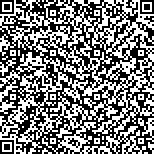| 引用本文: | 张宝玉,王广策,张 炎,韩笑天,吕颂辉,齐雨藻,邹景忠,曾呈奎.东海原甲藻(Prorocentrum donghaiense)和海洋原甲藻APBM(P.micans APBM)的5.8S rDNA及其转录间隔区(ITS)的克隆和序列分析.海洋与湖沼,2004,35(3):264-272. |
| |
|
| |
|
|
| 本文已被:浏览 2522次 下载 1900次 |

码上扫一扫! |
|
|
| 东海原甲藻(Prorocentrum donghaiense)和海洋原甲藻APBM(P.micans APBM)的5.8S rDNA及其转录间隔区(ITS)的克隆和序列分析 |
|
张宝玉1,2, 王广策1, 张 炎1, 韩笑天1,2, 吕颂辉3, 齐雨藻3, 邹景忠1, 曾呈奎1
|
|
1.中国科学院海洋研究所;2.中国科学院研究生院;3.暨南大学水生生物研究所
|
|
| 摘要: |
| 对东海原甲藻(Prorocentrum donghaiense)和海洋原甲藻APBM(P.micarts APBM)的5.8S rDNA及其转录间隔区(ITS)序列进行了PCR扩增、克隆和序列测定,并分析了甲藻属9株赤潮藻(7株从GenBank获得)的系统进化关系。结果表明,海洋原甲藻APBM的iTS片段(含5.8s区)为63lbp,东海原甲藻的(含5.8s区)为552bp;东海原甲藻与从GenBank中获得的微小原甲藻相似程度较高,与甲藻属其他原甲藻相似程度较低;本文研究的海洋原甲藻APBM的ITS序列与其他原甲藻相似程度都较低并且在进化树上距离也较远。用ITS1或ITS2序列构建的系统树与用ITS+5.8S rDNA序列构建的系统树反映的结果基本一致,5.8s区因过于保守似乎不适于构建系统树反映种下的亲缘关系。 |
| 关键词: 东海原甲藻, 海洋原甲藻, ITS, 序列分析, 系统进化 |
| DOI: |
| 分类号: |
| 基金项目:国家自然科学基金面上资助项目,30170499号;中国科学院知识创新重要方向性项目,KZCX2-211号;国家973项目“我国赤潮高发区赤潮生物多样性及其种群分布特征”,2001CB409701号 |
附件 |
|
| CLONING AND SEQUENCE ANALYSIS OF 5.8S rDNA AND ITS REGION FR0M PROROCENTRUM DONGHAIENSE AND P.MICANS APBM |
|
ZHANG Bao-Yu1,2, WANG Guang-Ce1, ZHANG Yan1, HAN Xiao-Tian1,2, Lü Song-Hui3, QI Yu-Zao3, ZOU Jing-Zhong1, ZENG Cheng-Kui(C.K.Tseng)1
|
|
1.Institute of Oceanology,Chinese Academy of Sciences;2.Graduate School,Chinese Academy of Sciences;3.Institute of Hydrobiology,Jinan University
|
| Abstract: |
| Red tide (HABs) is a global coastal water phenomenon caused by excess propagation of algae (mainly dinoflagellate species). Many algae are potential producers of potent toxins, posing not only a significant risk to public health, but also a negative economic impact. Sequences of 5.8S rDNA and internal transcribed spacers 1 and 2 have proved to be good molecular tools, and an important complement to traditional morphological identification. In this research, the 5.8S rDNA and ITS region from Prorocentrum donghaiense and P.micans APBM were amplified by PCR. 1) BLAST showed that the DNA amplified by polymerase chain reaction (PCR) were the ITS sequences including 5.8S rDNA. 2) The ITS length of P.micans APBM was 631 base pairs, and P.donghaiense’s ITS sequence was 552bp, further study showed that the ITS1 length of P.micans APBM is 245bp, 5.8S rDNA length is 165bp and ITS2 is 221bp; while the ITS1, 2, and 5.8S rDNA length of P.donghaiense is 203bp, 159bp, 190bp, respectively. 3) In the ITS sequence, P.donghaiense had a high level of similarity with P.minimum (all above 83%), but low level similarity with other species of P.micans and P.triestinum (about 60%一70%), while P.micans APBM showed the lowest level similarity with other P.micans species according to ITS sequence, it was about 30% only. The 5.8S rDNA was so conserved that the similarity of this region between P.donghaiense and other Prorocentrum species was very high, all above 95%, so was the similarity between P.micans APBM and other P.micans species. 4) Genetic trees were constructed using 5.8S rDNA, ITS1, ITS2 sequence and ITS +5.8S rDNA sequence respectively with Neighbor-joining (NJ) method. The result from phylogenetic tree of ITS2 sequence was the same as that showed by phylogenetic tree of ITS and 5.8S sequence, thus, the tree constructed using ITS2 sequence was not showed. The phylogenetic tree constructed with ITS +5.8S rDNA sequence showed that:1) 3 species of P.minimum form a clade with 100% bootstrap support, among which two species from Atlantic ocean got together because they had close relationship. P.donghaiense and P.minimum form a branch with 100% bootstrap support, this phenomenon showed that it had a close relationship with P.minimum, so was the result from the phylogenetic tree constructed with ITS1 sequence. However, P.donghaiense was found to be distantly related to other species of the Prorocentrum. This result accored with that showed by sequence similarity. 2) 3 species of P.micans, among which two coming from Atlantic Ocean, one from Korea sea area, form a clade with 100% bootstrap support. One Korea species and one Atlantic species got together. However, P.micans APBM formed a new branch in the phylogenetic tree of ITS +5.8S rDNA sequence, as well as in the tree of ITS1. This result should to be paid good attention, though BLAST show that the DNA fragment of P.micans APBM was in ITS and 5.8S rDNA region. 3) To the contrary, the phylogenetic tree constructed with 5.8S rDNA sequence indicated that P.minimum had a close relationship with P.micans, while one species of P.minimum was distant from other two species. The results of the phylogenetic tree constructed with 5.8S sequence were inaccurate; therefore, the use of 5.8S rDNA as a classification standard between species is not reasonable. |
| Key words: Prorocentrum donghaiense, P.micans, ITS, Sequence analysis, Phylogeny |
|
|
|
|
|
